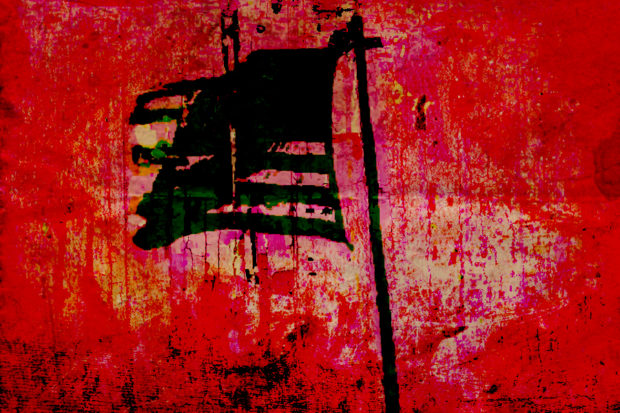

Fresno State student gadfly Neil O’Brien recently got exercised by Associated Students Vice President for Finance Cesar Sanchez’s comments on video that the Pledge of Allegiance was originally a scam, calling Sanchez “un-American.”
Sanchez didn’t put it very artfully, but a little research shows he is correct. According to the family of the man who wrote the original Pledge, Francis Bellamy, it first appeared in a campaign to sell U.S. flags and magazines to schoolchildren in 1892, shortly after it was composed.
Bellamy, a Baptist minister and Christian socialist, “viewed his Pledge as an ‘inoculation’ that would protect immigrants and native-born but insufficiently patriotic Americans from the ‘virus’ of radicalism and subversion,” according to Greg Beato last year in Reason. The original pledge as written by Bellamy read: “I pledge allegiance to my Flag and the Republic for which it stands, one nation indivisible, with liberty and justice for all.”
The Pledge was supposed to be quick and to the point. Bellamy designed it to be recited in 15 seconds. As a socialist, he had initially also considered using the words equality and fraternity but decided against it, knowing that the state superintendents of education on his committee were against equality for women and African Americans.
According to several histories, the pledge was first published in the September 8, 1892, issue of the then popular children’s magazine The Youth’s Companion as part of the National Public-School Celebration of Columbus Day, a celebration of the 400th anniversary of Christopher Columbus’s arrival in the Americas. The event was conceived and promoted by James B. Upham, a marketer for the magazine, as a campaign to instill the idea of American nationalism by selling flags to public schools and magazines to youngsters.
Bellamy and Upham lined up the National Education Association to support the magazine as a sponsor of the Columbus Day observance along with the use of the American flag. By late June 1892, Bellamy and Upham had arranged for Congress and President Benjamin Harrison to announce a national (presidential) proclamation (No. 335) making the public school flag ceremony the center of the national Columbus Day celebrations. The Pledge was first used in public schools on October 12, 1892, during Columbus Day observances organized to coincide with the opening of the World’s Columbian Exposition in Chicago.
The Bellamy family says the Companion was one of the bestselling magazines of the day. Family members add that the 1892 marketing campaign was highly successful, increasing the magazine’s sales from 400,000 to 600,000.
Since 1892, the Pledge has been modified several times, most famously in the 1950s with the addition of the words “under God” at the height of the cold war. And, a hand salute created by Bellamy was eliminated during World War II because of its similarity to the Nazi stiff-arm salute.
